Raphael Gontijo Lopes
Language Model Cascades
Jul 28, 2022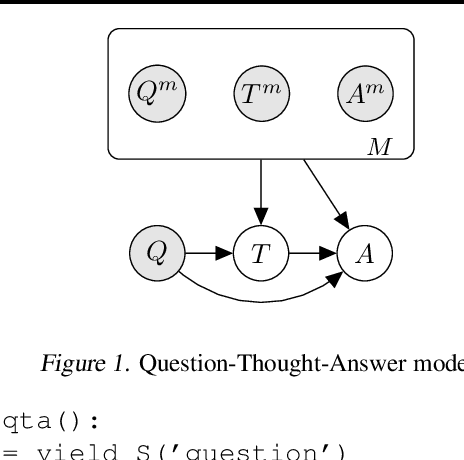
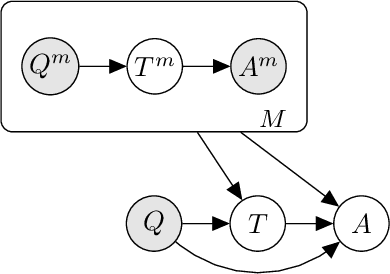
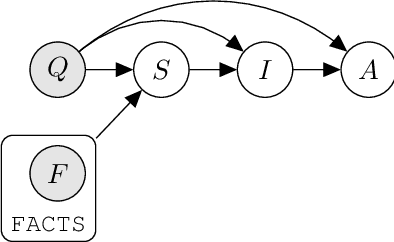
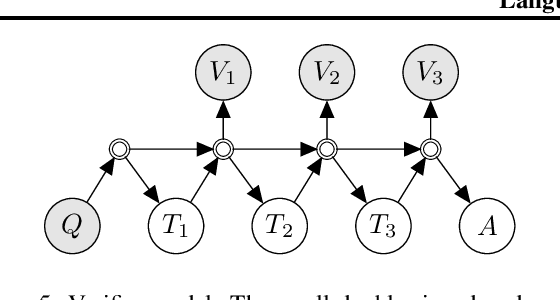
Abstract:Prompted models have demonstrated impressive few-shot learning abilities. Repeated interactions at test-time with a single model, or the composition of multiple models together, further expands capabilities. These compositions are probabilistic models, and may be expressed in the language of graphical models with random variables whose values are complex data types such as strings. Cases with control flow and dynamic structure require techniques from probabilistic programming, which allow implementing disparate model structures and inference strategies in a unified language. We formalize several existing techniques from this perspective, including scratchpads / chain of thought, verifiers, STaR, selection-inference, and tool use. We refer to the resulting programs as language model cascades.
Leveraging Semi-Supervised Learning in Video Sequences for Urban Scene Segmentation
May 22, 2020

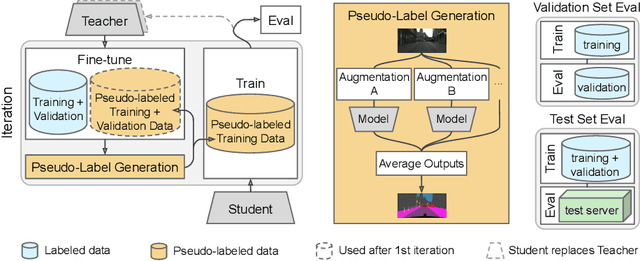

Abstract:Supervised learning in large discriminative models is a mainstay for modern computer vision. Such an approach necessitates investing in large-scale human-annotated datasets for achieving state-of-the-art results. In turn, the efficacy of supervised learning may be limited by the size of the human annotated dataset. This limitation is particularly notable for image segmentation tasks, where the expense of human annotation is especially large, yet large amounts of unlabeled data may exist. In this work, we ask if we may leverage semi-supervised learning in unlabeled video sequences to improve the performance on urban scene segmentation, simultaneously tackling semantic, instance, and panoptic segmentation. The goal of this work is to avoid the construction of sophisticated, learned architectures specific to label propagation (e.g., patch matching and optical flow). Instead, we simply predict pseudo-labels for the unlabeled data and train subsequent models with both human-annotated and pseudo-labeled data. The procedure is iterated for several times. As a result, our Naive-Student model, trained with such simple yet effective iterative semi-supervised learning, attains state-of-the-art results at all three Cityscapes benchmarks, reaching the performance of 67.8% PQ, 42.6% AP, and 85.2% mIOU on the test set. We view this work as a notable step towards building a simple procedure to harness unlabeled video sequences to surpass state-of-the-art performance on core computer vision tasks.
A Fourier Perspective on Model Robustness in Computer Vision
Jun 21, 2019



Abstract:Achieving robustness to distributional shift is a longstanding and challenging goal of computer vision. Data augmentation is a commonly used approach for improving robustness, however robustness gains are typically not uniform across corruption types. Indeed increasing performance in the presence of random noise is often met with reduced performance on other corruptions such as contrast change. Understanding when and why these sorts of trade-offs occur is a crucial step towards mitigating them. Towards this end, we investigate recently observed trade-offs caused by Gaussian data augmentation and adversarial training. We find that both methods improve robustness to corruptions that are concentrated in the high frequency domain while reducing robustness to corruptions that are concentrated in the low frequency domain. This suggests that one way to mitigate these trade-offs via data augmentation is to use a more diverse set of augmentations. Towards this end we observe that AutoAugment, a recently proposed data augmentation policy optimized for clean accuracy, achieves state-of-the-art robustness on the CIFAR-10-C and ImageNet-C benchmarks.
Improving Robustness Without Sacrificing Accuracy with Patch Gaussian Augmentation
Jun 06, 2019



Abstract:Deploying machine learning systems in the real world requires both high accuracy on clean data and robustness to naturally occurring corruptions. While architectural advances have led to improved accuracy, building robust models remains challenging. Prior work has argued that there is an inherent trade-off between robustness and accuracy, which is exemplified by standard data augment techniques such as Cutout, which improves clean accuracy but not robustness, and additive Gaussian noise, which improves robustness but hurts accuracy. To overcome this trade-off, we introduce Patch Gaussian, a simple augmentation scheme that adds noise to randomly selected patches in an input image. Models trained with Patch Gaussian achieve state of the art on the CIFAR-10 and ImageNetCommon Corruptions benchmarks while also improving accuracy on clean data. We find that this augmentation leads to reduced sensitivity to high frequency noise(similar to Gaussian) while retaining the ability to take advantage of relevant high frequency information in the image (similar to Cutout). Finally, we show that Patch Gaussian can be used in conjunction with other regularization methods and data augmentation policies such as AutoAugment, and improves performance on the COCO object detection benchmark.
A Learned Representation for Scalable Vector Graphics
Apr 04, 2019
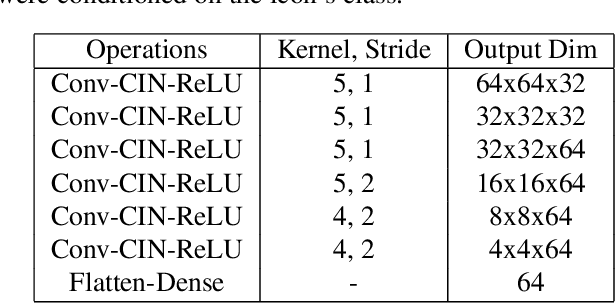


Abstract:Dramatic advances in generative models have resulted in near photographic quality for artificially rendered faces, animals and other objects in the natural world. In spite of such advances, a higher level understanding of vision and imagery does not arise from exhaustively modeling an object, but instead identifying higher-level attributes that best summarize the aspects of an object. In this work we attempt to model the drawing process of fonts by building sequential generative models of vector graphics. This model has the benefit of providing a scale-invariant representation for imagery whose latent representation may be systematically manipulated and exploited to perform style propagation. We demonstrate these results on a large dataset of fonts and highlight how such a model captures the statistical dependencies and richness of this dataset. We envision that our model can find use as a tool for graphic designers to facilitate font design.
End-to-End Audio Visual Scene-Aware Dialog using Multimodal Attention-Based Video Features
Jun 30, 2018



Abstract:Dialog systems need to understand dynamic visual scenes in order to have conversations with users about the objects and events around them. Scene-aware dialog systems for real-world applications could be developed by integrating state-of-the-art technologies from multiple research areas, including: end-to-end dialog technologies, which generate system responses using models trained from dialog data; visual question answering (VQA) technologies, which answer questions about images using learned image features; and video description technologies, in which descriptions/captions are generated from videos using multimodal information. We introduce a new dataset of dialogs about videos of human behaviors. Each dialog is a typed conversation that consists of a sequence of 10 question-and-answer(QA) pairs between two Amazon Mechanical Turk (AMT) workers. In total, we collected dialogs on roughly 9,000 videos. Using this new dataset for Audio Visual Scene-aware dialog (AVSD), we trained an end-to-end conversation model that generates responses in a dialog about a video. Our experiments demonstrate that using multimodal features that were developed for multimodal attention-based video description enhances the quality of generated dialog about dynamic scenes (videos). Our dataset, model code and pretrained models will be publicly available for a new Video Scene-Aware Dialog challenge.
Audio Visual Scene-Aware Dialog Challenge at DSTC7
Jun 01, 2018

Abstract:Scene-aware dialog systems will be able to have conversations with users about the objects and events around them. Progress on such systems can be made by integrating state-of-the-art technologies from multiple research areas including end-to-end dialog systems visual dialog, and video description. We introduce the Audio Visual Scene Aware Dialog (AVSD) challenge and dataset. In this challenge, which is one track of the 7th Dialog System Technology Challenges (DSTC7) workshop1, the task is to build a system that generates responses in a dialog about an input video
Data-Free Knowledge Distillation for Deep Neural Networks
Nov 23, 2017



Abstract:Recent advances in model compression have provided procedures for compressing large neural networks to a fraction of their original size while retaining most if not all of their accuracy. However, all of these approaches rely on access to the original training set, which might not always be possible if the network to be compressed was trained on a very large dataset, or on a dataset whose release poses privacy or safety concerns as may be the case for biometrics tasks. We present a method for data-free knowledge distillation, which is able to compress deep neural networks trained on large-scale datasets to a fraction of their size leveraging only some extra metadata to be provided with a pretrained model release. We also explore different kinds of metadata that can be used with our method, and discuss tradeoffs involved in using each of them.
 Add to Chrome
Add to Chrome Add to Firefox
Add to Firefox Add to Edge
Add to Edge